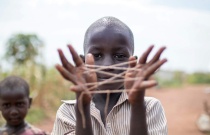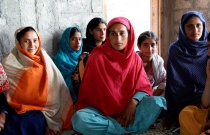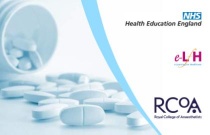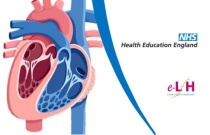New Hypertension Guidelines: Matching Risks and Treatments
Cheryl Dennison-Himmelfarb
Dr. Cheryl Dennison-Himmelfarb, Associate Dean for Research and Professor at Johns Hopkins University, discusses the 2017 AHA/ACC Hypertension Guideline and highlights treatment strategies according to patient risk level. This clinically-relevant session is timely and practical.
Aortic Stenosis: Awareness and Identification
Janet Fredal Wyman
The second of four peer-to-peer videos that aim to increase awareness of valvular heart disease and the important role that nurses play in early identification, access to prompt treatment and prevention of deleterious outcomes. The second video in this series is presented by Dr. Janet Wyman, Nurse Practitioner and Administrative....
Problem Solving
Rebecca Threatt, DNP, RN, CHSE
This course will help your understanding of problem solving and critical thinking. Problem Solving uses the ability to solve problems effectively which can contribute to the delivery of safe, competent nursing care. Critical thinking enables an individual to solve problems and make decisions. Find out why these are important fo....
Drugs and the Parasympathetic Nervous System
Natasha Joshi and Jeffrey Handel
This session examines the basic anatomy of the parasympathetic nervous system, as well as the synthesis, release and metabolism of neurotransmitters such as acetylcholine in this system and the drugs that act upon these processes.
Infection Prevention Control (IPC)
Dr. Justus Kamara Anacleth, and Ms. Fabiola Salvatory Nyaki
This course provides essential training in infection prevention control (IPC) and occupational safety for healthcare providers, focusing on safe practices within hospitals and laboratories. Continuous medical education on biosafety practices is crucial for reducing the risk of infection and contamination in healthcare settings.....
Module 4: Supporting Children, Families, and Ourselves in the Aftermath of Crisis
David Schonfeld, Tania Ahluwalia, and Dr. Dan Alaro
This module focuses on the psychosocial impact of disasters on children and their families and caregivers and describes ways to support these populations in coping with these impactsin the aftermath of disasters.
Assessment of Pain
Joanna Elverson
This session gives a framework of how to assess pain as an essential first step to appropriate pain management. This session was reviewed by Jo Elverson and last updated in September 2022.
Management of Nutritional Disorders in Paediatrics
Centre for Global Child Health at The Hospital for Sick Children (SickKids) in Toronto, Canada
This course provides health care professionals with a comprehensive overview of the prevention, screening, referral, and management of malnutrition in young children. It focuses on infants under six months at risk of poor growth and development, as well as children under five with moderate acute malnutrition (MAM) or severe acut....
Gender and Nutrition in a Global Context
Centre for Global Child Health at The Hospital for Sick Children (SickKids) in Toronto, Canada
This course gives health professionals a foundational understanding of key gender concepts, such as inequality, equality, equity, and the difference between sex and gender. It explores how gender roles and cultural norms affect nutrition outcomes, leading to gender-specific challenges. Participants will learn to apply gender-res....
Antimicrobial Drugs
Oliver Hamilton
This session describes the antibiotic drugs used most commonly in anaesthesia and critical care.
Antidepressants
Hannah Richards
This session describes the drugs commonly used in the treatment of mood disorders and psychosis, their mechanism of action and important adverse effects.
Corticosteroids, Thyroxine and Drugs Used in Thyroid Disorders
Michael Edward O'Connor
This session describes corticosteroids and their role in health, as well as the use of extrinsic corticosteroids in disease states, the complications associated with this use relevant to the anaesthetist, thyroid hormone production, and treatment of thyroid disorders.
Heart Valve Disease - Introduction
Dr Dominik Schlosshan
This session covers the epidemiology of heart valve disease.
Heart Valve Disease - Treatment and Follow up
Dr Norman Briffa
Welcome to this session on the treatment and follow-up of heart valve disease (HVD). This session aims to explain: 1. indications for intervention in patients with HVD (aortic stenosis and mitral regurgitation) 2. which therapeutic options are available 3. the risks and benefits of different treatments, which patients ne....
Module 2: Four 4S's of Disaster Management
Amyna Husain, Mark Baker, and Lisa Umphrey
This module offers an overview of the four “S” approach to disaster management and provides an understanding of all the different resources needed to effectively respond to a disaster in the pediatric context.
Agreeing a Plan of Management and Care
Vivienne Barros D’Sa, Clare Rayment
Once the patient's symptoms have been assessed a working diagnosis can be made. The clinician can then propose a plan for improving symptoms, discussing any advantages, disadvantages and practicalities with the patient. This session examines some of the different factors involved in agreeing a plan of management and care.....
SESSION 2: Extreme Weather Hazards: Tropical Cyclones and Flooding
KUTANE Waltaji Terfa and Peter Ebongué MBONDJI
In this session, we will explore the increasing risks of extreme weather events, such as tropical cyclones, inland and coastal flooding, driven by climate change in Africa. Participants will gain insights into the short-term and long-term health threats posed to patients and communities impacted by these events, and learn about....
SESSION 6: Vector-borne and Zoonotic Diseases
Desiree LaBeaud, and Adugna Woyessa
This session provides a comprehensive exploration of the environmental processes changing as a result of climate change and their impact on the prevalence, incidence, and distribution of vector-borne and zoonotic diseases including Malaria, Dengue fever, Rift Valley fever, Schistosomiasis, Chikungunya, and Zika. Through case st....
SESSION 7: Climate Extremes, Agriculture and Food Security
Dr. Beatrice Ekesa-Onyango, Kiswendsida Guigma, and John Otieno Otieno
This session focuses on the complex interplay between extremes of temperature and precipitation and their impacts on food security and malnutrition in the African continent. Participants will gain insights into how climate change-induced variations in temperature and precipitation patterns affect agricultural productivity and ex....
Symptom Management Complicated by Coexisting Conditions
Shaheen Khan
This session outlines some of the considerations to be taken into account when symptom management is complicated by coexisting conditions. This session outlines some of the considerations to be taken into account when symptom management is complicated by coexisting conditions.
Being a Rehab Nurse
Anna Reid
Being a rehabilitation nurse: the many hats we wear, the lives we touch, and what makes us special.
Tools and System Reporting
The Empower Group https://www.empowerschoolofhealth.org/
By the end of this course, you will have learnt about the following subjects: Tools and System Reporting.
SESSION 2: Vector-borne Disease
Tracy Kelly
This presentation discusses the relationship between climate change and vector-borne diseases (VBD), including water-borne, food-borne, and zoonotic diseases. It highlights the roles nurses can play in VBD prevention and identifies intersectoral measures that mitigate VBD risks.
SESSION 3: Water-and Food Related Illness
Martha Grant Fuller
This presentation discusses the impacts of climate change on water and food security. Participants will examine threats such as poor water management, drought, and contamination, as well as their effects on human health. Solutions for addressing these challenges and promoting regional water conservation are also explored.
SESSION 5: Mental Health
Mitzie R. Meyers and Josephine S.C. Williams
This presentation discusses the mental health impacts of climate change, particularly on vulnerable populations. It covers barriers to accessing mental health services, strategies for health promotion, and coping mechanisms for climate-related stress.
























